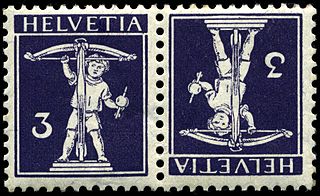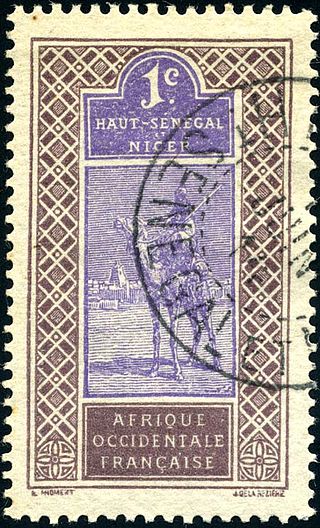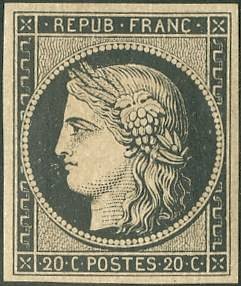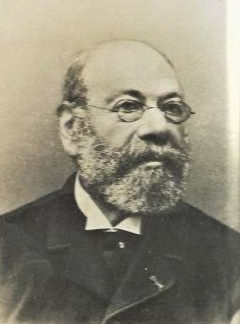
This is a survey of the postage stamps and postal history of Switzerland.

The French post offices in the Ottoman Empire were post offices in various cities of the Ottoman Empire run by France between 1812 and 1923. France was one of a half-dozen European countries, the others being Austria, Russia, Great Britain, Germany and Italy, which had been granted the right to maintain post offices within the Empire. This privilege was distinct from the so-called "Capitulations" which, since the 16th century, had been negotiated with a much larger number of countries and which granted some extraterritorial rights to citizens and commercial enterprises of those countries. Initially restricted to consular mail, these post offices could soon be used by foreign and local businesses and individuals, provided they used the postage stamps of the post office concerned. The system came to end with the Treaty of Lausanne in 1923.

Upper Senegal and Niger was a colony in French West Africa created in 1904 from Senegambia and Niger. Niger became a separate military district in 1911 and a separate colony in 1922, Upper Volta was split off in 1919, and the remainder reorganized as French Sudan in 1920. The capital was Bamako.

The Belgian franc was the currency of the Kingdom of Belgium from 1832 until 2002 when the Euro was introduced. It was subdivided into 100 subunits, each known as a centiem in Dutch, centime in French or a Centime in German.
Each "article" in this category is in fact a collection of entries about several stamp issuers, presented in alphabetical order. The entries themselves are formulated on the micro model and so provide summary information about all known issuers.
Each "article" in this category is a collection of entries about several stamp issuers, presented in alphabetical order. The entries are formulated on the micro model and so provide summary information about all known issuers.
Each "article" in this category is a collection of entries about several stamp issuers, presented in alphabetical order. The entries are formulated on the micro model and so provide summary information about all known issuers.
Each "article" in this category is a collection of entries about several stamp issuers, presented in alphabetical order. The entries are formulated on the micro model and so provide summary information about all known issuers.
Each "article" in this category is a collection of entries about several stamp issuers, presented in alphabetical order. The entries are formulated on the micro model and so provide summary information about all known issuers.
Each "article" in this category is a collection of entries about several stamp issuers, presented in alphabetical order. The entries are formulated on the micro model and so provide summary information about all known issuers.
Each "article" in this category is a collection of entries about several stamp issuers, presented in alphabetical order. The entries are formulated on the micro model and so provide summary information about all known issuers.

The Principality of Sealand, a self-proclaimed micronation founded on a former World War II fort in the North Sea, has issued a number of coins and stamps for collectors. These coins and stamps are denominated in "Sealand dollars" (SX$). Sealand coins can be considered souvenirs only or "rounds" since they do not circulate anywhere and are not accepted as currency by any nation.

The Ceres series was the first postage stamp series of France, issued in 6 different values from 1849 to 1850 as a representation of the French Republic.
This is a survey of the postage stamps and postal history of Dalmatia.

This is a survey of the postage stamps and postal history of Fezzan and Ghadames, both now part of Libya.
During World War II, the Belgian government needed to mint coins using metal that would not be needed for the war effort. Therefore, silver coinage was discontinued and coins were instead minted using pure zinc.

Radio Belgique (French) and Radio België (Dutch) were radio broadcasts transmitted to German-occupied Belgium from London during World War II. It was produced with the support of the Belgian government in exile and formed part of the BBC's European Service.

The German occupation of Belgium during World War II began on 28 May 1940, when the Belgian army surrendered to German forces, and lasted until Belgium's liberation by the Western Allies between September 1944 and February 1945. It was the second time in less than thirty years that Germany had occupied Belgium.

Epaulettes is the name given by philatelists to the first series of postage stamps issued by Belgium. The stamps, which depicted King Leopold I with prominent epaulettes from which the name derives, became legally usable on 1 July 1849. Two denominations with the same design were issued simultaneously: a brown 10 centimes and a blue 20 centimes. They were produced as the result of a series of national reforms to the postal system in Belgium, based on the success of similar British measures adopted in 1840. The stamps allowed postal costs to be pre-paid by the sender, rather than the receiver, and led to a sharp increase in the volume of mail. Although quickly superseded by new types, Epaulettes proved influential and have since inspired several series of commemorative stamps.

Jacob Wiener, or Jacques Wiener was a Belgian medallist. He is best known for helping to create the first Belgian postage stamps, issued in 1849.















